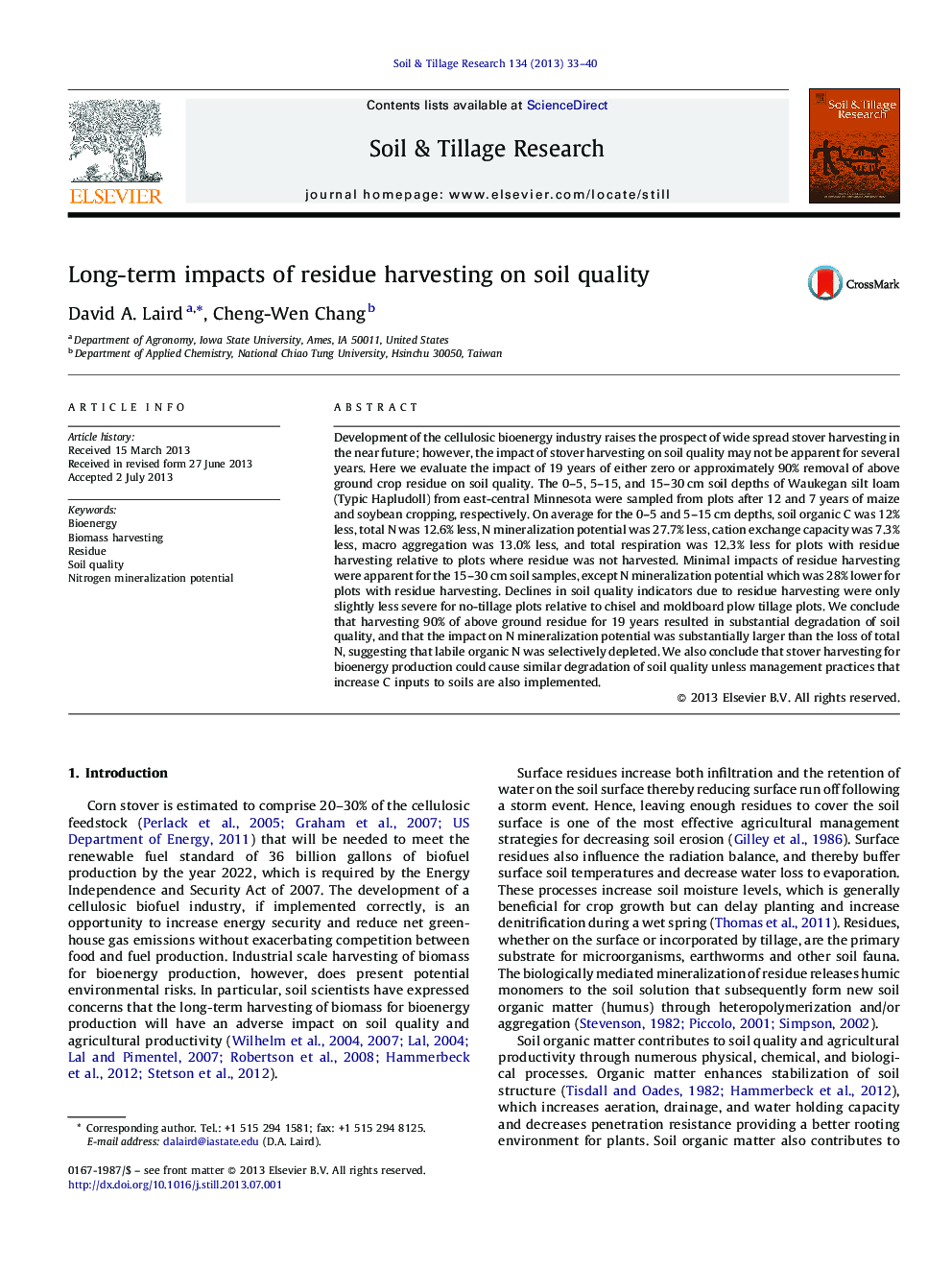| کد مقاله | کد نشریه | سال انتشار | مقاله انگلیسی | نسخه تمام متن |
|---|---|---|---|---|
| 305797 | 513052 | 2013 | 8 صفحه PDF | دانلود رایگان |

• Nineteen years of harvesting 90% of above ground residue degraded soil quality.
• Due to residue harvesting soil organic C and total N decreased by 12% and 12.6%.
• Due to residue harvesting cation exchange capacity decreased by 7.3%.
• Due to residue harvesting N mineralization potential decreased by 27.7%.
Development of the cellulosic bioenergy industry raises the prospect of wide spread stover harvesting in the near future; however, the impact of stover harvesting on soil quality may not be apparent for several years. Here we evaluate the impact of 19 years of either zero or approximately 90% removal of above ground crop residue on soil quality. The 0–5, 5–15, and 15–30 cm soil depths of Waukegan silt loam (Typic Hapludoll) from east-central Minnesota were sampled from plots after 12 and 7 years of maize and soybean cropping, respectively. On average for the 0–5 and 5–15 cm depths, soil organic C was 12% less, total N was 12.6% less, N mineralization potential was 27.7% less, cation exchange capacity was 7.3% less, macro aggregation was 13.0% less, and total respiration was 12.3% less for plots with residue harvesting relative to plots where residue was not harvested. Minimal impacts of residue harvesting were apparent for the 15–30 cm soil samples, except N mineralization potential which was 28% lower for plots with residue harvesting. Declines in soil quality indicators due to residue harvesting were only slightly less severe for no-tillage plots relative to chisel and moldboard plow tillage plots. We conclude that harvesting 90% of above ground residue for 19 years resulted in substantial degradation of soil quality, and that the impact on N mineralization potential was substantially larger than the loss of total N, suggesting that labile organic N was selectively depleted. We also conclude that stover harvesting for bioenergy production could cause similar degradation of soil quality unless management practices that increase C inputs to soils are also implemented.
Journal: Soil and Tillage Research - Volume 134, November 2013, Pages 33–40